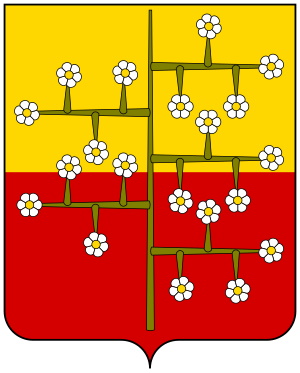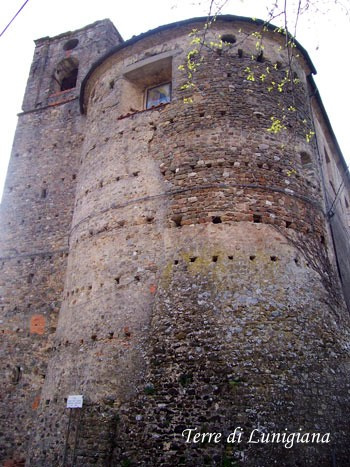From the XV to the XX century
The hamlet of Vaccareccia, in the ancient land of the Marquis Malaspina di Olivola belongs to the branch of the Spino Fiorito, it stands on a hill at an altitude of 230 meters above sea level, with a 360° view on the Tosco Emiliano Apennines, from Mount Cornoviglio to the mountain of Nuda with breathtaking views of the Apuan Alps.
Its birth can be attributed to the need for colonization and cultivation of the territory by the authority of that age (Marquis Malaspina di Olivola) and the defense of road routes that had gone developing after the year one thousand. It was one of the "villas" of the territory together with Quercia, Sanacco and Imolacosta all connected to each other by a minor roads still used today for healthy and relaxing walks in the woods of chestnut trees, accessible only on foot away from the traffic.
La fama che la vostra casa onora, grida i segnori e grida la contrada, sì che ne sa chi non vi fu ancora; e io vi giuro, s’io di sopra vada, che vostra gente onrata non si sfregia del pregio de la borsa e de la spada.
Source: Divina Commedia, Purg., VIII, vv. 124-129
Vaccareccia, in fact, is a short distance from the old path that linked the Romanesque churches of Soliera and Venelia (ancient name of Monti di Licciana Nardi) and, even today, in the Pontebosio hamlet, is called the "Roman Road" and could , surely, be a moment of rest after the climb from Pontebosio toward Olivola or after the long journey from Soliera.
This route represented a branch of the Via Francigena, and a link with the way of the Holy Face which led through the Garfagnana in Lucca, home of the famous relic.
The hamlet has never had specific defensive connotations which suggests that the era of his birth was quiet (always in relation to the times): no defensive walls, the houses built just beside the road, which becomes internal and subject, to some extent, to control even with the realization of turn portions of the late seventeenth century origin.
The architecture is typical of a poor and unpretentious agricultural society and leveled socially.
Our hamlet appears, officially for documentation so far traced, in documents to the mid-1400s thanks to deeds drawn up by a notary Baldassare Nobles of Olivola.
In the years 1465-1471 are draw up 37 acts in which appear, in various ways (witnesses, buyers, sellers in person or by proxy vendors such as mayors of the communities of Olivola, Quercia, Collecchia and Bigliolo and relations with Gabriele Marquis of Fosdinovo, who took over the line of Olivola, extinct in a bloody manner by a betrayed husband in 1413), some people named Zilio, Genisio, Michele, Egidio, Rolando, all of the late Simone. By an act it shows that the Marchese Gabriele had "two casamenta" in Vaccareccia in addition to "canipariate" lands that are sold to Egidio e Rolando to provide a dowry for one of his daughter.
The Florentine stories of Whites and Blacks factions have also had an influence in Vaccareccia: as a matter of fact a Florentine family, Baldassini, exiled moved first to Argigliano, in Garfagnana and later in Vaccareccia where it bought land and owned a block of flats; then the family will move to Quercia (a priest named Baldassini will have the care of Olivola and Quercia in 1775). In 1400 the family will move to Quercia.
In the year 1748 the community, on the initiative of Bishop Domenico Blandini, asks, given the remoteness of Olivola and the situation of the road connecting especially in winter, to build an oratory in order to fulfill the Christian precepts worthily. Permission is granted and the building gets realized still in use today as a oratory. The first dedication was to the Holy Spirit, but as there is no codified name-day, the dedication is added to the archangel St. Michael, whose feast is celebrated in October. On request, today, can also be celebrated other liturgical functions such as baptisms and weddings.
The building, of modest proportions, has a single nave with a central dome, simple Baroque altar with pilasters and score on the wall of the east side while on the west side is adjacent to another building. The entrance facade, without pilasters, is marked by the entrance door, two small side windows and a square portholes all surrounded by simple squaring local sandstone.
The nave is illuminated, as well as from the windows of the front facade, with windows high up on the East side and two openings in the wall behind the altar.
Inside the church there is a painting of the Madonna with child and two characters, probably nineteenth-century manufacture.
In 1777 Don Santo Gilli, Olivola chaplain but native to Vaccareccia get permission to build a chapel in Vaccareccia, headquarters of his family, but the location of the chapel is unknown.
The population of the hamlet was also increased with migration from other regions of Italy (in addition to Baldassini from Florence) as the Po valley for Gilli (disappeared in recent times and Bertacchini) and neighboring hamlets such Barbarasco and Tresana.
The agricultural economy of the time was not enough to support the population, in the fifteenth and sixteenth century, it was customary during the grape harvest and the olive harvest many male inhabitants emigrate, temporarily, to Umbria and some of them, to increase the value of their work, they had become the rights holders (one might say modern "actions") of mills and oil mills in Spoleto and Ortona and sold afterwards.
The Gilli family had distinguished itself in the field of trade inasmuch had made a supply service of grain with neighboring Emilia (Parma and Reggio in particular) with its own transport with donkeys and wholesale resale to "workshops" existing in Aulla and Pallerone. The activity came to an end in the late nineteenth century.
Source: Architect Libero Bardi11 marzo 2017

